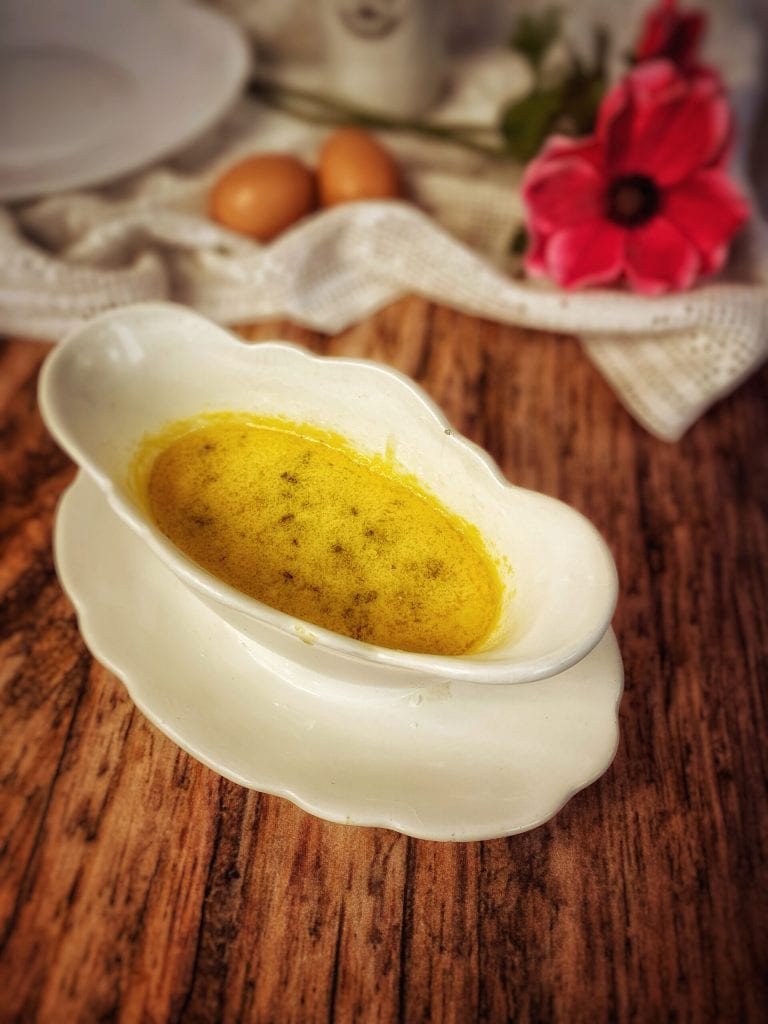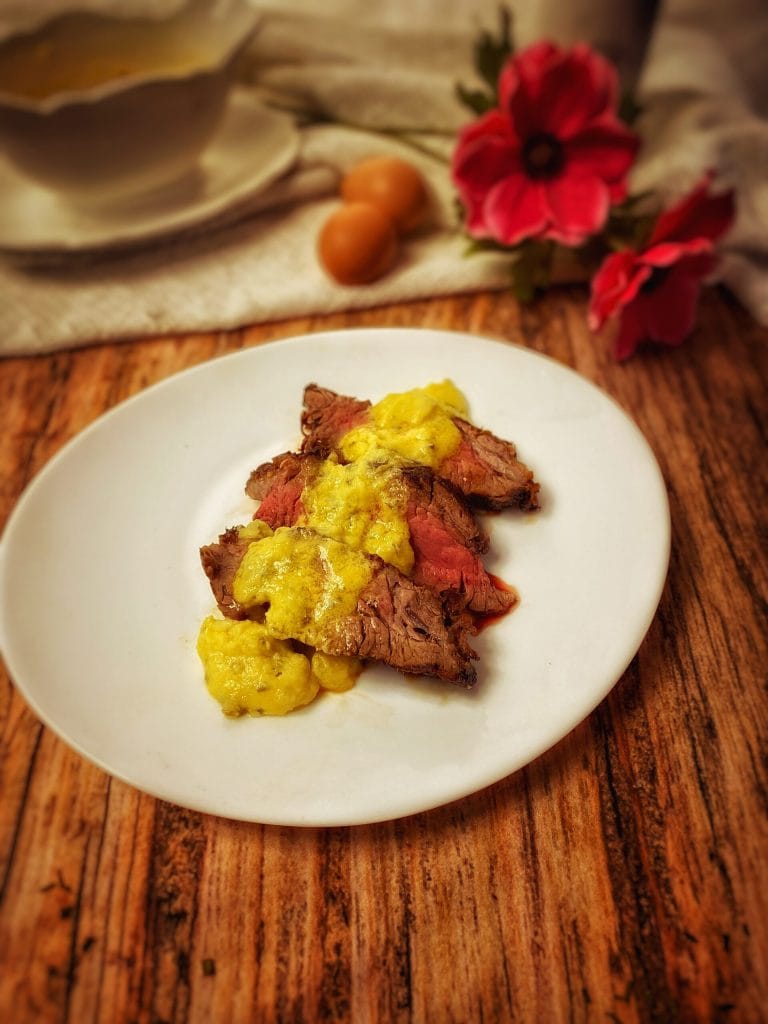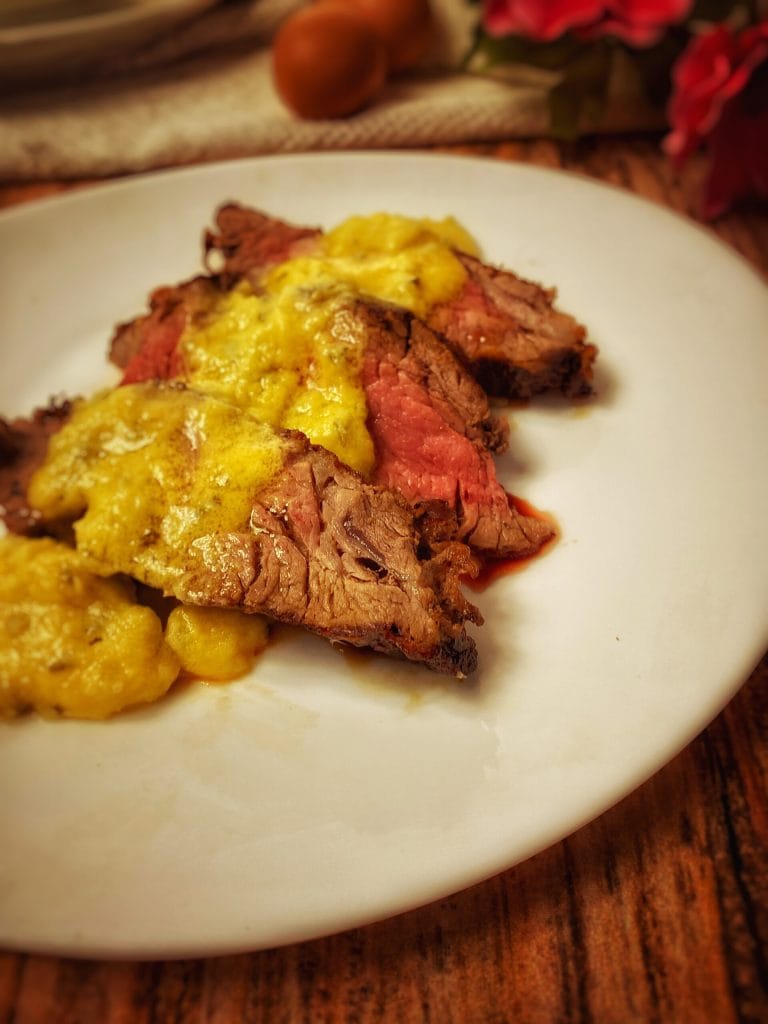The Béarnaise Sauce (sauce béarnaise) is a sauce warm emulsified made with clarified butter, egg yolk, shallot, tarragon and/or chervil, usually served to enhance meats.
It is a variation of Hollandaise Sauce.
Contrary to popular belief, it is not originally from the French state of Béarn but from the Paris region.
According to some sources, it was accidentally created by Jean-Louis-François Collinet, head chef of the Pavillon Henri IV in Saint-Germain-en-Laye, who made an emulsion with egg yolk to make up for the lack of shallot reduction.
When asked by customers about the name of this new sauce, he improvised the name “sauce béarnaise” by focusing on the bust of Henry IV, originally from Pau, the capital of Béarn, which stood in the room.
Among the most classic pairings of Béarnaise Sauce is with chateaubriand, a beef cut that refers to the final part of the fillet, a piece about 1-1.5 inches thick, a gourmet culinary specialty of French cuisine, depending on its position in the head, heart, or tip of the muscle.

- Difficulty: Medium
- Cost: Medium
- Rest time: 30 Minutes
- Preparation time: 10 Minutes
- Cooking methods: Bain-marie, Boiling
- Cuisine: French
- Seasonality: All seasons
Ingredients
- 2 egg yolks
- 5 tablespoons vinegar
- 100 ml white wine
- 100 ml clarified butter (+ for browning the meat)
- to taste tarragon (and/or chervil)
- 1 shallot
- to taste salt and pepper
- 500 g chateaubriand
- to taste olive oil
Tools
- 1 Thermometer kitchen
Steps
Bring the vinegar to a boil with the white wine, shallot, and tarragon. Adjust with pepper.
Create a reduction of about 1.5 fl oz.
In a bain-marie, add the reduction to the egg yolks while whisking the mixture.
Off the heat, add the melted butter in a thin stream while continuing to stir.
Adjust with tarragon and if necessary, add a few tablespoons of water.
Heat before serving.

For the chateaubriand:
Season the meat with salt, pepper, oil, and salt.
Let it rest for 30 minutes.
Due to its thickness, the cooking of chateaubriand is different from tournedos and must be done in two stages:
searing over very high heat with butter until a golden layer forms (Maillard reaction) that prevents juices from escaping, then cooking more moderately, basting with butter, so that heat penetrates gradually inside.
To serve it rare, it should reach an internal temperature of about 131°F.
Let it rest for a few minutes.
Slice and serve with béarnaise sauce on top or on the side.


How to serve chateaubriand
There are several ways to cut chateaubriand:
– the fillet is simply cut into 1.5-inch thick slices perpendicular to the fibers;
– the heart of the fillet is formed like a roast entirely wrapped and tied (as for tournedos), then sliced into 1.5-inch pieces;
– it can be served along its entire length, especially for the thinner tip of the fillet, with fibers parallel to the cooking plane.
FAQ (Frequently Asked Questions)
What is tarragon?
Estragone, tragone, and dragone are some of the names for tarragon (Artemisia dracunculus), a perennial plant species belonging to the Asteraceae family.
In Italy, it’s very rare to find tarragon in nature, except in some limited areas of Piedmont.
You can substitute it with chervil, thyme or chives if you can’t find it.

